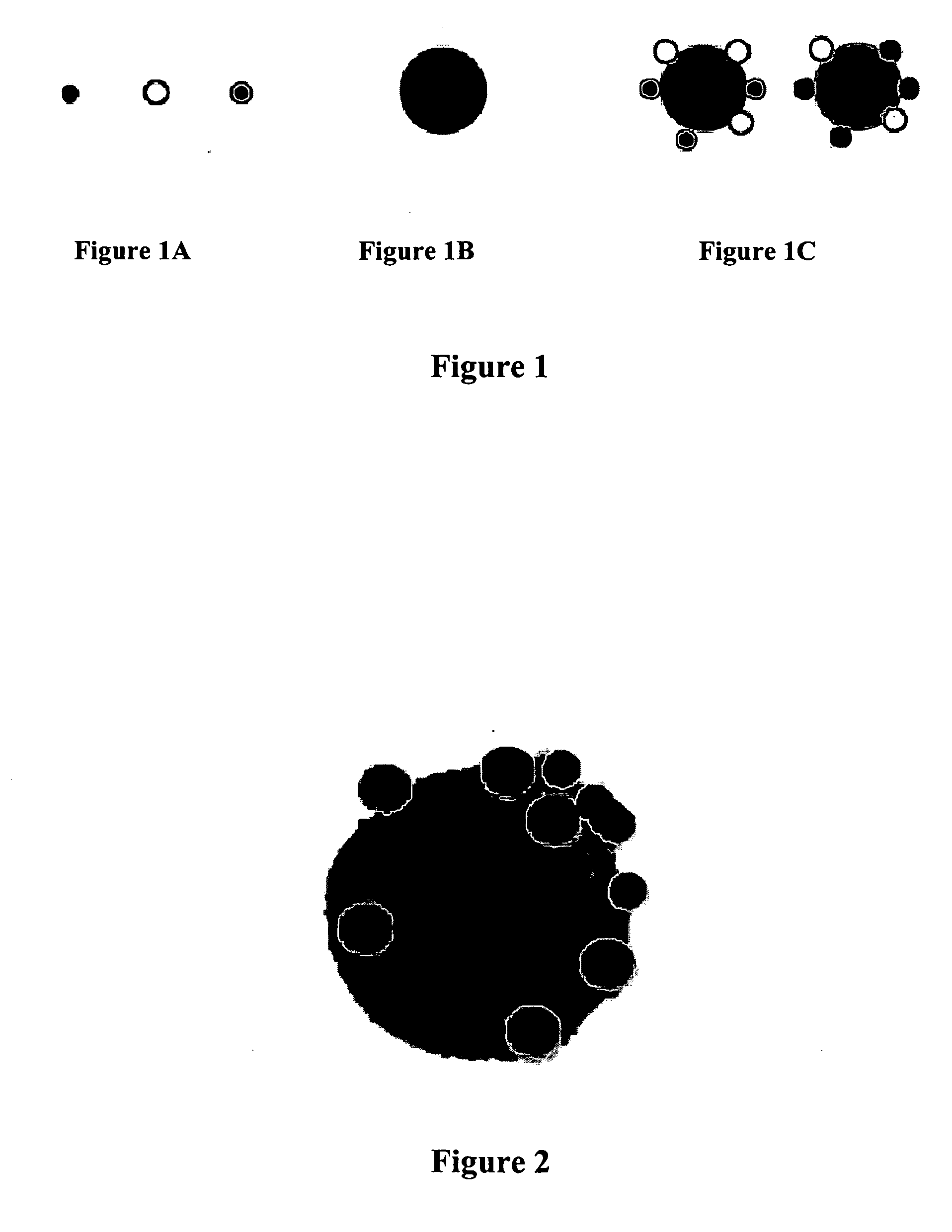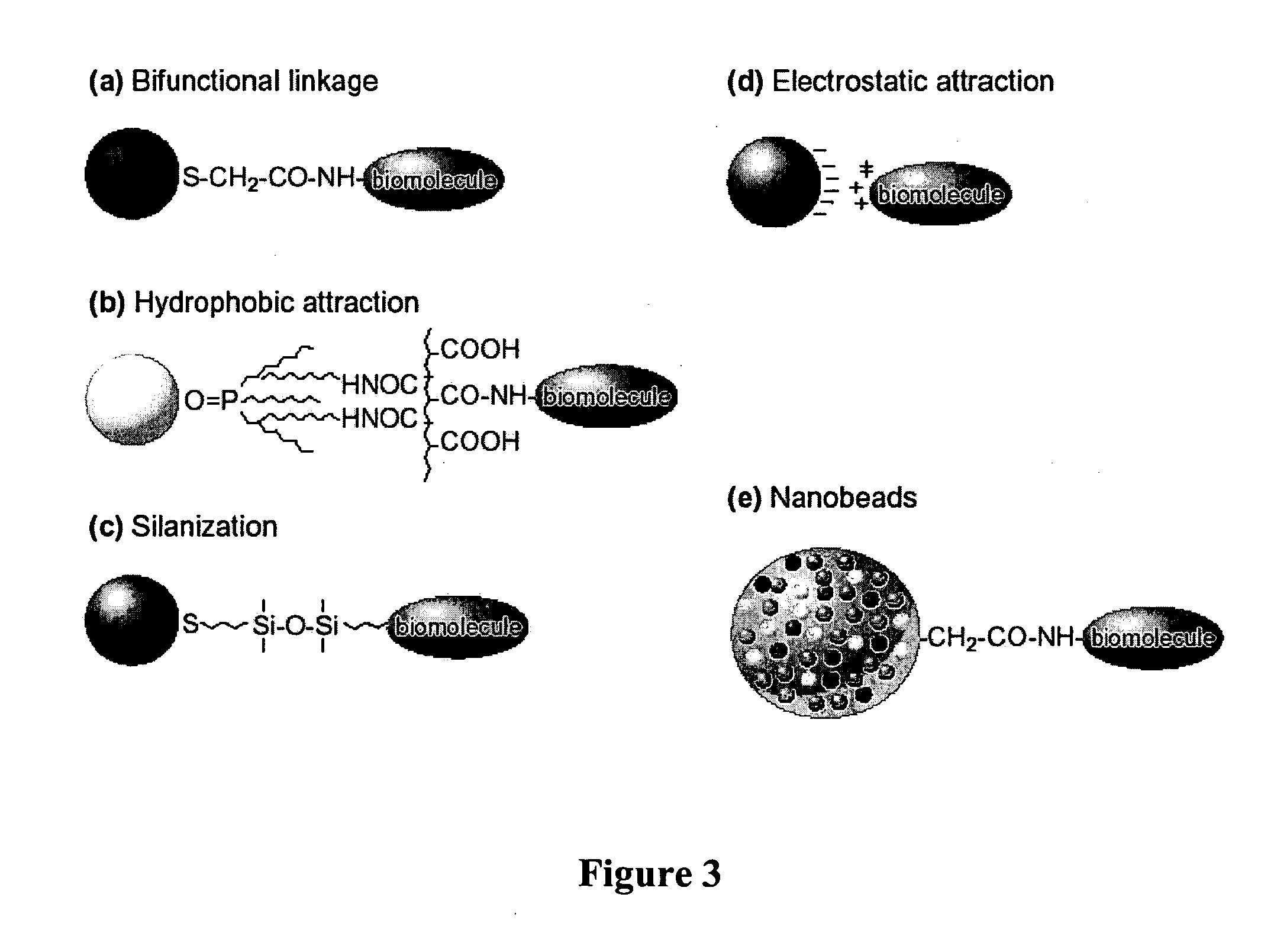Use of particulate labels in bioanalyte detection methods
a bioanalyte and label technology, applied in the field of use of particulate labels in bioanalyte detection methods, can solve the problems of parallel assay, inability to clearly distinguish one antigen-antibody complex from another, and weak signal emitted by these labels
- Summary
- Abstract
- Description
- Claims
- Application Information
AI Technical Summary
Benefits of technology
Problems solved by technology
Method used
Image
Examples
Embodiment Construction
[0037] Some of the assays of the invention utilize particulate labels and microscopic observation techniques to phenotype individual cells based on the cell's constellation of surface antigens, intracellular antigens, and / or secreted proteins. Such assays include: characterization of the multivariate cytokine secretion profile of single cells under various conditions; characterization of the specificity and other properties (such as isotype) of secreted immunoglobulins against one another or a panel of antigens; characterization of the tissue milieu associated with patterned tissue growth, including angiogenesis and regeneration; automated pathology in which multiple cell types are individually recognizable by virtue of binding cell type specific antibodies coupled to distinguishable particulate labels or by physical entrapment of the labels (tissue paints); characterization of subcellular localization of proteins; characterization of MRNA expression at single cell level; characteri...
PUM
 Login to View More
Login to View More Abstract
Description
Claims
Application Information
 Login to View More
Login to View More - R&D
- Intellectual Property
- Life Sciences
- Materials
- Tech Scout
- Unparalleled Data Quality
- Higher Quality Content
- 60% Fewer Hallucinations
Browse by: Latest US Patents, China's latest patents, Technical Efficacy Thesaurus, Application Domain, Technology Topic, Popular Technical Reports.
© 2025 PatSnap. All rights reserved.Legal|Privacy policy|Modern Slavery Act Transparency Statement|Sitemap|About US| Contact US: help@patsnap.com



